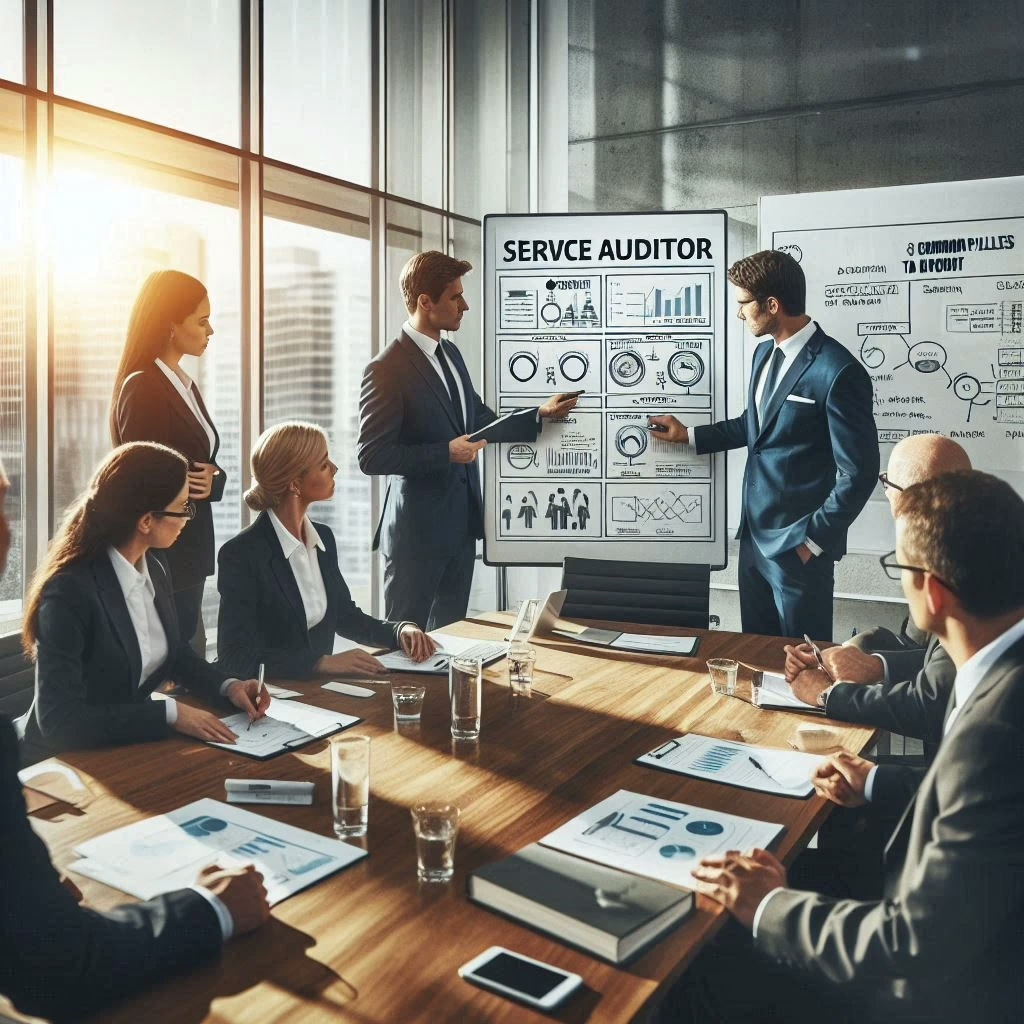Introduction to Remote Audits
In the evolving landscape of internal auditing, remote audits have emerged as a significant practice, reshaping how auditors engage with their clients and stakeholders.
Definition of Remote Audits: Remote audits, often referred to as e-audits, are conducted without the physical presence of auditors at the client’s location. Instead, they leverage technology to facilitate the audit process, allowing auditors to review documents, conduct interviews, and assess controls from a distance. This method utilizes various digital tools and platforms to ensure that the audit objectives are met effectively and efficiently.
Growth of Remote Audits: The rise of remote audits can be attributed to several factors, including rapid technological advancements and the global challenges posed by events such as the COVID-19 pandemic. These developments have necessitated a shift towards more flexible auditing practices, enabling firms to maintain continuity and adapt to changing circumstances. As organizations increasingly embrace digital transformation, remote audits have become a viable solution, allowing for seamless collaboration and data sharing across geographical boundaries.
Unique Challenges of Remote Audits: While remote audits offer numerous advantages, they also present unique challenges that differ from traditional audit methods. Key issues include:
- Communication Barriers: The lack of face-to-face interaction can hinder the development of trust and rapport between auditors and clients. Effective communication strategies are essential to bridge this gap and ensure clarity throughout the audit process.
- Technology Dependence: Remote audits rely heavily on technology, which can introduce risks related to data security and access. Auditors must ensure that robust systems are in place to protect sensitive information and facilitate secure communication.
- Engagement and Motivation: Keeping audit teams motivated and focused in a remote environment can be challenging. It is crucial to establish clear communication channels and regular check-ins to maintain engagement and address any concerns that may arise during the audit.
As remote audits continue to gain traction, understanding the importance of communication becomes paramount. By addressing the unique challenges posed by this auditing approach, internal auditors can foster trust and collaboration with their stakeholders, ultimately leading to more successful audit outcomes.
The Importance of Communication in Remote Audits
In the evolving landscape of internal auditing, remote audits have become a necessity, especially in light of recent global events. However, the shift to remote auditing presents unique challenges, particularly in the realm of communication. Effective communication is not just a supplementary aspect of the audit process; it is a fundamental pillar that supports the entire framework of remote audits. Here are key reasons why communication is crucial in this context:
- Building Trust with Stakeholders through Transparent Communication: Trust is the cornerstone of any successful audit relationship. In remote audits, where face-to-face interactions are limited, transparent communication becomes even more vital. Audit teams must prioritize openness by sharing information about the audit process, findings, and recommendations. This transparency fosters a sense of security among stakeholders, as they feel informed and involved in the audit process, which ultimately strengthens the client-auditor relationship [3][14].
- Ensuring Clarity and Understanding of Audit Objectives, Scope, and Timelines: Clear communication is essential to ensure that all parties involved have a mutual understanding of the audit’s objectives, scope, and timelines. Misunderstandings can lead to confusion and inefficiencies, which can compromise the audit’s effectiveness. By establishing clear communication channels and regularly updating stakeholders on progress, auditors can mitigate these risks and ensure that everyone is aligned with the audit goals [10][12].
- Facilitating Collaboration Among Audit Teams and Auditees Despite Geographical Distances: Remote audits often involve teams and stakeholders spread across different locations. Effective communication strategies can bridge these geographical gaps, enabling collaboration and teamwork. Utilizing digital platforms for regular check-ins, updates, and feedback can enhance engagement and ensure that all voices are heard. This collaborative approach not only improves the audit process but also helps in building rapport and trust among team members and stakeholders [4][9][15].
The importance of communication in remote audits cannot be overstated. By focusing on transparent communication, ensuring clarity of objectives, and facilitating collaboration, internal auditors can navigate the challenges of remote audits effectively. This not only enhances the audit process but also builds lasting trust with stakeholders, which is essential for the success of any audit engagement.
Strategies for Effective Communication in Remote Audits
In the evolving landscape of internal auditing, remote audits have become increasingly prevalent. However, the success of these audits hinges significantly on effective communication. Here are some actionable strategies that can enhance communication during remote audits, ultimately building trust between auditors and stakeholders.
- Utilizing Technology Tools for Real-Time Communication: Leveraging technology is essential for facilitating seamless communication during remote audits. Tools such as video conferencing platforms (e.g., Zoom, Microsoft Teams) and chat applications (e.g., Slack, Microsoft Teams) enable auditors to engage with stakeholders in real-time. These tools not only allow for face-to-face interactions but also help in sharing documents and visuals instantly, which can clarify complex issues and foster a collaborative environment. Regular check-ins through these platforms can ensure that all parties remain aligned throughout the audit process [5].
- Establishing a Communication Plan: A well-defined communication plan is crucial for remote audits. This plan should outline the frequency of updates, preferred communication methods, and the responsibilities of each team member. By setting clear expectations, auditors can minimize misunderstandings and ensure that stakeholders are informed about the audit’s progress. This structured approach helps in maintaining transparency and accountability, which are vital for building trust [6][9].
- Encouraging Open Dialogue and Feedback Loops: Fostering an environment where open dialogue is encouraged can significantly enhance the effectiveness of remote audits. Auditors should actively solicit feedback from stakeholders and create opportunities for them to voice their concerns and questions. This can be achieved through regular feedback sessions or informal check-ins. By addressing issues promptly and demonstrating responsiveness, auditors can strengthen their relationships with stakeholders and enhance the overall audit experience.
Effective communication is the backbone of successful remote audits. By utilizing technology, establishing a clear communication plan, and encouraging open dialogue, internal auditors can navigate the challenges of remote auditing while building trust and collaboration with their stakeholders. These strategies not only improve the audit process but also contribute to more accurate and impactful outcomes.
Overcoming Communication Barriers
In the realm of internal auditing, effective communication is paramount, especially in the context of remote audits. As organizations increasingly adopt virtual methodologies, auditors face unique challenges that can hinder the audit process. Here, we identify common barriers to effective communication in remote audits and propose strategies to overcome them.
Addressing Time Zone Differences and Scheduling Challenges
- Time Zone Coordination: One of the most significant hurdles in remote audits is managing time zone differences. Auditors and stakeholders may be located in various regions, making it difficult to find suitable times for meetings and discussions. To mitigate this, it is essential to establish a shared calendar that highlights the availability of all parties involved. This can help in scheduling meetings at mutually convenient times, ensuring that everyone can participate without undue stress or confusion [2][10].
- Flexible Scheduling: Emphasizing flexibility in scheduling can also alleviate some of the pressure associated with time zone differences. By being open to adjusting meeting times and accommodating the needs of all participants, auditors can foster a more collaborative environment that encourages open dialogue and engagement [8].
Managing Cultural Differences in Communication Styles
- Cultural Sensitivity: Different cultures have varying communication styles, which can lead to misunderstandings during remote audits. Auditors should take the time to understand the cultural backgrounds of their stakeholders and adapt their communication approaches accordingly. This may involve recognizing different norms regarding directness, formality, and non-verbal cues [10].
- Training and Awareness: Providing training on cultural awareness for audit teams can enhance their ability to navigate these differences effectively. By equipping auditors with the skills to recognize and respect diverse communication styles, organizations can build stronger relationships with their stakeholders and improve the overall audit experience [11].
Using Clear and Concise Language to Minimize Misunderstandings
- Clarity in Communication: The use of clear and concise language is crucial in remote audits to minimize misunderstandings. Auditors should strive to communicate in straightforward terms, avoiding jargon and overly complex language that may confuse stakeholders. This approach not only enhances understanding but also builds trust, as stakeholders feel more confident in their interactions with auditors [7][15].
- Regular Check-Ins: Establishing regular check-ins can help ensure that all parties are on the same page. These touchpoints provide opportunities to clarify any uncertainties and reinforce key messages, thereby reducing the likelihood of miscommunication [10][12].
- Utilizing Technology: Leveraging technology, such as video conferencing tools, can enhance communication by allowing for visual cues and non-verbal interactions. Turning on cameras during meetings can help auditors observe body language and other non-verbal signals, which can be critical in assessing the authenticity of information shared [13][14].
Overcoming communication barriers in remote audits is essential for building trust and ensuring the effectiveness of the audit process. By addressing time zone differences, managing cultural variations, and employing clear communication strategies, internal auditors can enhance their interactions with stakeholders and foster a more productive audit environment.
Building Relationships with Stakeholders
In the realm of internal audits, particularly in a remote environment, effective communication is paramount for building trust and fostering collaboration. Establishing strong relationships with stakeholders not only enhances the audit process but also ensures that findings are well-received and acted upon. Here are some key strategies to consider:
- Establishing Rapport Before and During the Audit: Building rapport with stakeholders is essential for successful remote audits. Auditors should strive to position themselves as trusted advisors rather than mere evaluators. This can be achieved through active listening, empathy, and understanding the unique perspectives and concerns of stakeholders. By engaging in open dialogues and demonstrating genuine interest in stakeholders’ needs, auditors can create a foundation of trust that facilitates smoother interactions throughout the audit process [5][6].
- The Role of Regular Updates and Check-Ins: Maintaining stakeholder engagement during remote audits requires consistent communication. Regular updates and check-ins are crucial for keeping stakeholders informed about the audit’s progress and any preliminary findings. This transparency not only reassures stakeholders but also allows them to provide timely feedback and address any concerns that may arise. Establishing a communication charter that outlines preferred methods, response times, and meeting schedules can further enhance this process, ensuring that all parties are aligned and engaged [12][11].
- Encouraging Stakeholder Participation and Input: Actively involving stakeholders in the audit process fosters a sense of ownership and collaboration. Encouraging their participation through surveys, polls, or direct discussions can help auditors gather valuable insights and perspectives that may influence the audit’s direction. This collaborative approach not only enriches the audit findings but also strengthens the relationship between auditors and stakeholders, as it demonstrates respect for their input and expertise [10][14].
The success of remote audits hinges on the ability of internal auditors to build and maintain strong relationships with stakeholders. By employing effective communication strategies, auditors can enhance trust, engagement, and collaboration, ultimately leading to more impactful audit outcomes.
Documenting Communication Efforts
In the realm of remote audits, effective communication is not just a best practice; it is essential for fostering trust, accountability, and transparency among internal auditors and their stakeholders. As remote audits become increasingly common, the need for meticulous documentation of communication efforts cannot be overstated. Here are key points to consider:
- Maintaining Clear Records: It is crucial to keep detailed records of all communications, decisions, and action items throughout the audit process. This documentation serves as a reference point for all parties involved, ensuring that everyone is on the same page regarding expectations and outcomes. Clear records help mitigate misunderstandings and provide a basis for accountability, which is particularly important in a remote setting where face-to-face interactions are limited [3][10].
- Using Project Management Tools: Implementing project management tools can significantly enhance the tracking of communication threads and audit progress. These tools allow auditors to organize discussions, share documents, and monitor the status of various tasks in real-time. By centralizing communication, auditors can ensure that all relevant information is easily accessible and that stakeholders are kept informed of developments throughout the audit process [6][12].
- Accessibility of Documented Communication: Ensuring that documented communication is accessible to all relevant parties is vital for fostering transparency. Stakeholders should be able to review communication logs, decisions made, and action items assigned. This accessibility not only builds trust but also encourages collaboration, as stakeholders can provide input and feedback based on the documented information [5][9].
Focumenting communication efforts in remote audits is a fundamental practice that enhances accountability and transparency. By maintaining clear records, utilizing project management tools, and ensuring accessibility, internal auditors can build trust with stakeholders and facilitate a more effective audit process.
Conclusion: The Path Forward for Remote Audits
In the evolving landscape of internal auditing, effective communication has emerged as a cornerstone for successful remote audits. As organizations increasingly embrace hybrid work environments, the ability to maintain clear and consistent communication becomes paramount. Here are the key takeaways regarding the importance of communication in remote audits:
- Benefits of Effective Communication: Clear communication fosters transparency and trust between auditors and stakeholders. It ensures that all parties are aligned on expectations, timelines, and deliverables, which is crucial for the smooth execution of remote audits. By maintaining open channels of communication, auditors can address concerns promptly, reducing the likelihood of misunderstandings and enhancing the overall audit experience [11].
- Adopting Communication Strategies: Internal auditors are encouraged to implement the strategies discussed throughout this blog. This includes utilizing technology to facilitate real-time communication, setting regular check-ins, and being proactive in sharing updates. By doing so, auditors can keep stakeholders informed and engaged, which is essential for building trust and ensuring a collaborative audit process [10][14].
- Call to Action for Stakeholders: Stakeholders play a vital role in the success of remote audits. It is imperative for them to actively participate in communication efforts, providing timely feedback and sharing relevant information. By fostering a culture of open dialogue, stakeholders can contribute to a more effective audit process, ultimately leading to better outcomes for the organization [12].
In conclusion, as we navigate the future of auditing, prioritizing communication will not only enhance the effectiveness of remote audits but also strengthen the relationships between internal auditors and their stakeholders. Embracing these communication strategies will pave the way for more successful and trustworthy audit engagements.
Find out more about Shaun Stoltz https://www.shaunstoltz.com/about/
This post was written by an AI and reviewed/edited by a human.



